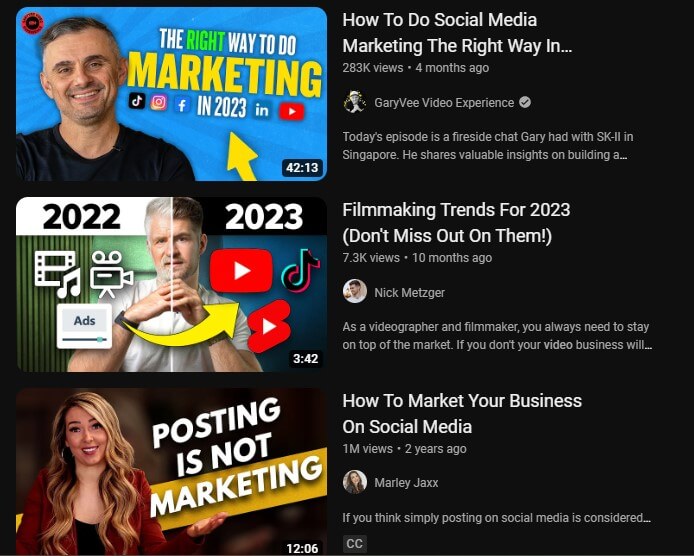SEO for Videos: 10 Simple Ways to Optimize Your Video for Search
SEO for videos has never been more vital in today’s digital world. But what exactly is it? And how does it function?
Using videos to present information and engage with an audience is becoming increasingly popular. What truly counts is whether or not your videos are being watched by the people you desire them to be seen by. We’ll go extensively into the subject of Video SEO to assist you in optimizing your videos and answer the critical problems that every content producer and marketer should be asking.
Want your videos to get more views and a higher Google ranking? You know that, right?! You’ve found the correct spot to get that info. Join us as we explore the mysteries of Video SEO and help you reach new heights with your video content.
Importance of SEO for Videos
Video SEO shines as a promising strategy in this age of short attention spans and intense competition. This is why it’s significant:
Enhanced Visibility: Get your videos at the top of search results and in front of more eyes.
Increased Engagement: Videos that are both interesting and useful in some way can keep visitors on your site for longer and reduce your bounce rate.
Better Conversion Rates: Increased sales and income may result from well-optimized videos with compelling content.
How to Do SEO for Your Videos
Keyword Research for Video
The first step in efficient video optimization is conducting extensive keyword research. You can use keyword research tools like Google Keyword Planner, SEMrush, or Ahrefs to discover currently trending keywords and the number of searches they receive. Make your video more searchable by using these terms thoughtfully in the title, description, and tags. Make your video more searchable by using these terms thoroughly in the title, description, and tags.
If you are having a hard time on where to start, ask yourself a question and start from there. According to Moz Around 8% of search queries are phrased as questions.
Why does it hold importance? Optimizing your videos with the proper keywords improves their discoverability and increases the likelihood that relevant search results will show them, both of which lead to an increase in organic traffic.
Create Videos with Catchy Titles
The title of your video will be the first thing viewers see, so it should be interesting and informative. Make sure the title of your video appropriately reflects the subject matter by using your target keyword in a natural way. Your video’s search engine rankings will improve as well as its ability to attract viewers if you take the time to write a compelling title.
Examples
Would you rather choose these:
- “Video Marketing Basics
- “Video Marketing Tips
- “Video Marketing Explained”
or these:
- “Lights, Camera, Conversions: The Art of Video Marketing”
- “Engage, Convert, Succeed: The Video Marketing Playbook”
- “Rise Above the Noise: Building Your Brand with Video Marketing”
The second example seems to stir some emotion in you right!? Always remember the following when creating a title for your video:
- Use Keywords: Incorporate relevant keywords to signal the video’s content to search engines and users.
- Be Descriptive: Clearly convey what the video is about to set clear expectations.
- Keep it Concise: Avoid having your title cut off in search results by keeping it under 60 characters.
- Evoke Emotion: Use emotional language or trigger phrases to connect with the audience on an emotional level.
- Ask Questions: Pose questions that people won’t be able to resist clicking on.
- Highlight Benefits: Mention the benefits or value viewers will gain from watching.
- Add Numbers: Use digits to indicate lists, steps, or the quantity of information provided.
- Include Adjectives: Utilize descriptive words to make the title more compelling.
- Leverage Curiosity: Use curiosity to your advantage by teasing something about the video’s content that viewers won’t expect.
- A/B Testing: Experiment with different titles to see which ones perform best with your audience.
Craft Informative Video Descriptions
You may add more optimization and context to your videos by using their descriptions. Include pertinent keywords in lengthy, in-depth descriptions. Including time stamps, relevant material links, and a call to action can effectively engage users and maintain their interest in your message. Keep the description short and sweet, but ensure enough detail to maintain readers’ interest. An effective video description may boost both views and the video’s ranking in search results.
The first few words of your description are what visitors will see, so be sure they accurately represent your video.
Google
Utilize Video Tags Effectively
Tags are essential for organizing your video library. Select both general and particular tags that accurately describe your video’s content. This boosts your video’s visibility in search results by giving search engines a better grasp of its context.
Optimize Video Thumbnails
The number of clicks an image receives depends in large part on how appealing its thumbnail is. Create engaging custom thumbnails that fairly depict the video’s content. Make your movie stand out from the competition by adding text overlays, high-quality photos, and logos. According to MarketingProfs human faces were present in 72% of the 740 YouTube videos analyzed, and 88% of the films were in color.

Video Transcript and Closed Captions
Not only can transcripts and closed captions help more people see your videos, but they also provide search engines with more text to index. Having captions for your video can increase its visibility in search results and make it more accessible to people who need them. Why are video transcripts and closed captions important? Here are three reasons why:
Accessibility: They allow those who may have trouble hearing the audio in a video, such as those with hearing impairments or those in loud situations, to watch the video.
SEO: Since search engines can’t “watch” videos, transcripts, and captions are essential for SEO because they give text-based information that search engines can index to better categorize and rank your videos.
User Engagement: Extra information provided by transcripts and closed captions improves the quality of the whole service. As a result, your audience will spend more time watching and participating in the video.
Connect with Your Viewers
Video SEO relies heavily on engagement metrics like views, likes, and shares. You may get people involved with your video by asking them questions, getting their feedback, or urging them to leave comments. Quickly addressing user feedback is an easy way to build trust and strengthen relationships with your audience.
Promote Your Video Across Platforms
Don’t only promote your videos on YouTube. Distribute the video on various social media platforms, include it in your website or blog, and think about forming partnerships with other bloggers or influencers in your field to increase your exposure. Your video’s chances of doing well in Google search results increase as its exposure grows. Here are some websites where you can promote your videos:
- Youtube
- TikTok
- Snapchat
- Tumblr
- Vimeo
- Dailymotion
Analyze and Track Video Performance
Use the analytics features offered by sites like YouTube on a regular basis to check in on your videos’ progress. Keep an eye on stats like audience retention, clickthrough rate, and viewing time. Consider this information when you plan and produce future videos.
Stay Updated with Video SEO Trends
As with everything else in the digital world, video SEO developments come and go. Maintain a level of expertise in the ever-evolving field of video optimization by reading up on the most recent algorithm changes, best practices, and cutting-edge technology. Maintain and increase your video’s rating by adjusting your strategy as needed.
Bottom Line
Optimizing your videos for search engines is crucial if you want them to reach as many people as possible and have the greatest possible impact. To increase your video’s visibility on Google, you should do things like study relevant keywords, craft appealing titles and descriptions, and interact with your audience. Keep up with the most recent developments in video SEO to maintain your competitive edge in the dynamic online market.







